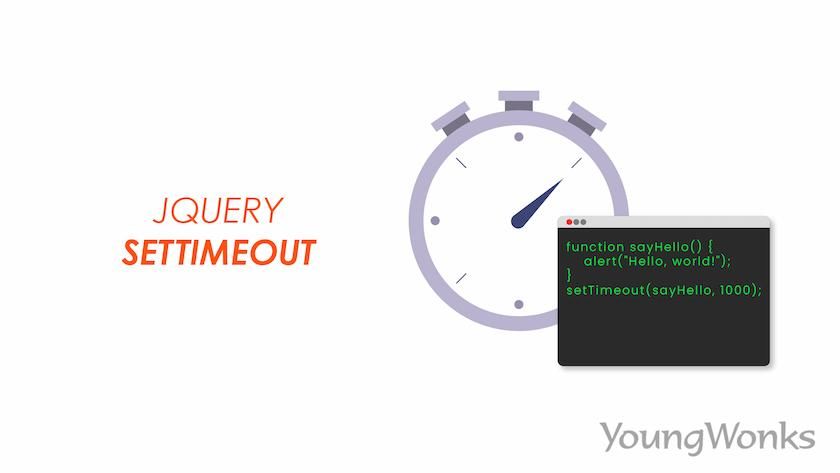Modern web and server-side applications are fundamentally asynchronous. Whether you’re fetching data from an API, reading a file from a disk, or responding to user interactions in the DOM, you’re dealing with operations that don’t complete instantly. Managing this asynchronicity is one of the most critical skills for any developer. In the world of TypeScript vs JavaScript, TypeScript provides a robust, type-safe layer on top of JavaScript’s powerful asynchronous capabilities, helping developers write cleaner, more maintainable, and less error-prone code.
This in-depth TypeScript Tutorial will guide you through the landscape of Async TypeScript. We’ll explore the evolution from traditional callbacks to the elegance of Promises and the modern, intuitive `async/await` syntax. You’ll learn not just the “how” but also the “why,” with practical code examples and best practices applicable to popular frameworks like TypeScript React, TypeScript Node.js, and TypeScript Angular. By the end, you’ll be equipped to handle any asynchronous challenge with confidence and precision.
The Foundations of Asynchronous Operations in TypeScript
To truly master modern asynchronous patterns, it’s essential to understand their origins. The journey from confusing, nested code to clean, linear logic showcases a significant evolution in JavaScript and, by extension, TypeScript.
The Old Way: Callbacks
In the early days of Node.js and browser-based JavaScript, the primary mechanism for handling asynchronous operations was the callback function. A callback is simply a function passed as an argument to another function, which is then invoked (“called back”) once the asynchronous operation completes. While simple for a single operation, this pattern quickly becomes unwieldy when dealing with sequential asynchronous tasks.
This leads to a notorious anti-pattern known as “Callback Hell” or the “Pyramid of Doom,” where nested callbacks create a deeply indented, rightward-drifting structure that is difficult to read, debug, and maintain.
// A classic "Pyramid of Doom" example
function doAsyncTask(callback: (result: string) => void) {
console.log("Starting task...");
setTimeout(() => {
console.log("Task finished.");
callback("Step 1 Complete");
}, 1000);
}
// Simulating a sequence of dependent async operations
doAsyncTask((result1) => {
console.log(result1);
doAsyncTask((result2) => {
console.log(result2);
doAsyncTask((result3) => {
console.log(result3);
console.log("All steps are done!");
});
});
});This pattern makes error handling particularly cumbersome, as each step requires its own error-handling logic, further complicating the code.
The Rise of Promises: A Better Abstraction
To solve the problems posed by callbacks, Promises were introduced in ES6 (ES2015). A Promise is an object that represents the eventual completion (or failure) of an asynchronous operation and its resulting value. It provides a much cleaner way to chain asynchronous tasks and handle errors.
A Promise can be in one of three states:
- Pending: The initial state; the operation has not completed yet.
- Fulfilled: The operation completed successfully, and the Promise has a resolved value.
- Rejected: The operation failed, and the Promise has a reason for the failure (an error).
TypeScript enhances Promises by adding strong typing through TypeScript Generics. You can specify the type of the value a Promise will resolve to, like Promise<string> or Promise<User>. This provides compile-time safety and excellent autocompletion in your editor.
Let’s refactor our callback example using Promises TypeScript style. Here, we’ll define a User TypeScript Interface to demonstrate type safety.

// Define an interface for our data structure
interface User {
id: number;
name: string;
email: string;
}
// A function that returns a Promise resolving with a User object
function fetchUser(userId: number): Promise<User> {
return new Promise((resolve, reject) => {
console.log(`Fetching user with ID: ${userId}...`);
// Simulate a network delay
setTimeout(() => {
const users: { [id: number]: User } = {
1: { id: 1, name: "Alice", email: "alice@example.com" },
2: { id: 2, name: "Bob", email: "bob@example.com" },
};
const user = users[userId];
if (user) {
// Fulfill the promise with the user data
resolve(user);
} else {
// Reject the promise with an error
reject(new Error("User not found"));
}
}, 1500);
});
}
// Using the Promise with .then() for success and .catch() for errors
fetchUser(1)
.then((user: User) => {
console.log("Successfully fetched user:", user.name);
// You can chain more .then() blocks here for sequential operations
})
.catch((error: Error) => {
console.error("Error fetching user:", error.message);
})
.finally(() => {
console.log("Fetch operation finished.");
});This approach is a massive improvement. The code is flatter, more readable, and has a centralized error-handling mechanism with .catch(). This is a foundational concept in modern TypeScript Development.
Modern Asynchronous TypeScript with Async/Await
While Promises solved callback hell, chaining multiple .then() calls could still become verbose. The introduction of `async/await` syntax in ES2017 provided syntactic sugar over Promises, allowing developers to write asynchronous code that looks and behaves like synchronous code.
Syntactic Sugar for Promises
The `async` and `await` keywords are the heart of this modern approach.
async: When placed before a function declaration (including Arrow Functions TypeScript), it ensures the function implicitly returns aPromise. If the function returns a value, it will be a Promise that resolves with that value.await: This operator can only be used inside an `async` function. It pauses the execution of the function and waits for aPromiseto settle (either fulfill or reject). If fulfilled, it returns the resolved value. If rejected, it throws the error.
This pattern makes complex asynchronous workflows, common in TypeScript Express backends or TypeScript React data-fetching hooks, incredibly easy to write and reason about.
Practical Implementation: Fetching API Data
Let’s rewrite our `fetchUser` example using the elegant `async/await` syntax. Notice how much cleaner and more intuitive it becomes. We’ll also incorporate the standard `fetch` API for a more realistic example of interacting with a REST API.
// We can reuse the User interface from the previous example
interface User {
id: number;
name: string;
username: string;
email: string;
}
// An async function to fetch a user from a real API
async function getUserFromAPI(userId: number): Promise<User> {
const url = `https://jsonplaceholder.typicode.com/users/${userId}`;
console.log(`Fetching from ${url}...`);
// Use a try...catch block for robust error handling
try {
// 'await' pauses execution until the fetch Promise resolves
const response = await fetch(url);
// Check if the request was successful
if (!response.ok) {
throw new Error(`HTTP error! Status: ${response.status}`);
}
// 'await' also pauses for the JSON parsing Promise to resolve
// TypeScript's type inference might infer 'any', so we assert the type.
const user = await response.json() as User;
return user;
} catch (error) {
console.error("Failed to fetch user:", error);
// Re-throw the error to allow the caller to handle it
throw error;
}
}
// Calling the async function
async function main() {
try {
const user = await getUserFromAPI(1);
console.log(`User found: ${user.name} (@${user.username})`);
// You can now perform another await here, e.g., get user's posts
// const posts = await getUserPosts(user.id);
} catch (error) {
console.error("Main function caught an error.");
}
}
main();Error Handling with try…catch
One of the biggest advantages of `async/await` is that it allows you to use standard `try…catch…finally` blocks for handling TypeScript Errors, just as you would with synchronous code. This is often more intuitive than the .catch() method of Promises. As shown in the example above, wrapping `await` calls in a `try` block lets you catch any rejected Promises (like network failures or 404 responses) in a single, clean `catch` block. This is a cornerstone of robust TypeScript Debugging and error management.
Advanced Asynchronous Patterns and Techniques
Once you’re comfortable with the basics of `async/await`, you can leverage more advanced Promise-based APIs to handle complex scenarios like concurrent operations and timeouts.
Concurrent Operations with `Promise.all` and `Promise.allSettled`
A common performance pitfall is awaiting multiple independent promises sequentially. If the operations don’t depend on each other, you should run them in parallel to save time.

Promise.all takes an array of promises and returns a single new Promise. This new Promise resolves when all of the input promises have resolved, yielding an array of their resolved values. However, it will reject immediately if any of the input promises reject.
interface Post {
userId: number;
id: number;
title: string;
body: string;
}
// Assume getUserFromAPI from the previous example exists
async function fetchUserAndPosts(userId: number): Promise<{ user: User; posts: Post[] }> {
try {
console.log("Fetching user and posts concurrently...");
// Start both requests without awaiting them immediately
const userPromise = getUserFromAPI(userId);
const postsPromise = fetch(`https://jsonplaceholder.typicode.com/posts?userId=${userId}`)
.then(res => res.json() as Promise<Post[]>);
// Promise.all waits for both to complete
const [user, posts] = await Promise.all([userPromise, postsPromise]);
console.log(`Fetched user ${user.name} and ${posts.length} posts.`);
return { user, posts };
} catch (error) {
console.error("Failed to fetch user and posts:", error);
throw error;
}
}
fetchUserAndPosts(1);Promise.allSettled is a safer alternative when you need the outcome of every promise, regardless of whether it was fulfilled or rejected. It waits for all promises to settle and returns an array of objects describing the outcome of each one.
Typing Asynchronous Functions
Adhering to TypeScript Best Practices means being explicit about your types. Always define the return type of your async functions. The return type of an `async` function is always a `Promise` that wraps the type of the value you return from it. For example, a function that returns a `string` becomes `async function(): Promise<string>`. This helps the TypeScript Compiler catch errors and provides a clear contract for other developers using your function.
You can also use TypeScript Utility Types like Awaited<T> to infer the resolved type of a Promise, which is useful in more complex generic functions.
Best Practices, Common Pitfalls, and Tooling
Writing effective asynchronous code goes beyond just knowing the syntax. It involves understanding performance implications, common mistakes, and leveraging the right tools.
Common Pitfalls to Avoid

- Forgetting `await`: Calling an `async` function without `await` returns a pending Promise, not the resolved value. This is a frequent source of bugs.
- Sequential `await` vs. Parallel `Promise.all`: As discussed, never `await` independent promises in sequence. It creates an unnecessary waterfall that slows down your application. Use `Promise.all` for concurrency.
- Unnecessary `async` keyword: If a function doesn’t use the `await` keyword, it probably doesn’t need to be `async`. Adding it unnecessarily adds a small performance overhead by wrapping the return value in a Promise.
Tooling and Configuration
Your TSConfig file plays a vital role in how your async code is handled. The "target" and "lib" compiler options are critical:
"target": Setting this to"ES2017"or higher ensures that `async/await` syntax is preserved as native code. If you target an older version like"ES5", TypeScript will transpile it down to more complex state machine code, which can be harder to debug."lib": Ensure you include libraries like"DOM"(for browser APIs like `fetch`) and"ES2018"or later (for features like `Promise.prototype.finally`) to make their types available.
Tools like TypeScript ESLint are invaluable for enforcing best practices. You can configure rules to flag unhandled promises (@typescript-eslint/no-floating-promises) or suggest better async patterns, keeping your codebase clean and robust.
Testing Asynchronous Code
Testing async logic is straightforward with modern testing frameworks. When using Jest TypeScript, you can simply declare your test functions with `async` and use `await` inside them. This allows you to write clean, linear TypeScript Unit Tests for your asynchronous functions.
// A simple test for our async function using Jest
// __tests__/api.test.ts
// Mocking fetch globally for tests
global.fetch = jest.fn(() =>
Promise.resolve({
ok: true,
json: () => Promise.resolve({ id: 1, name: 'Test User' }),
})
) as jest.Mock;
// The test itself
test('getUserFromAPI should return a user object', async () => {
// The 'await' here is crucial
const user = await getUserFromAPI(1);
expect(user).toBeDefined();
expect(user.id).toBe(1);
expect(user.name).toBe('Test User');
});Conclusion
Asynchronous programming is a fundamental part of modern software development, and TypeScript provides an exceptional, type-safe environment for mastering it. We’ve journeyed from the convoluted “Pyramid of Doom” with callbacks to the structured chaining of Promises, and finally to the clean, synchronous-style code of `async/await`. While `async/await` is the modern standard, a deep understanding of the underlying Promise mechanism is essential for tackling advanced scenarios and debugging effectively.
By applying these patterns and best practices, you can build more responsive, performant, and maintainable applications. Whether you’re working on a frontend with TypeScript Vue, a backend with TypeScript NestJS, or any other modern stack, a firm grasp of Async TypeScript is non-negotiable. Start refactoring your code today to embrace the clarity and safety that these powerful features provide.




